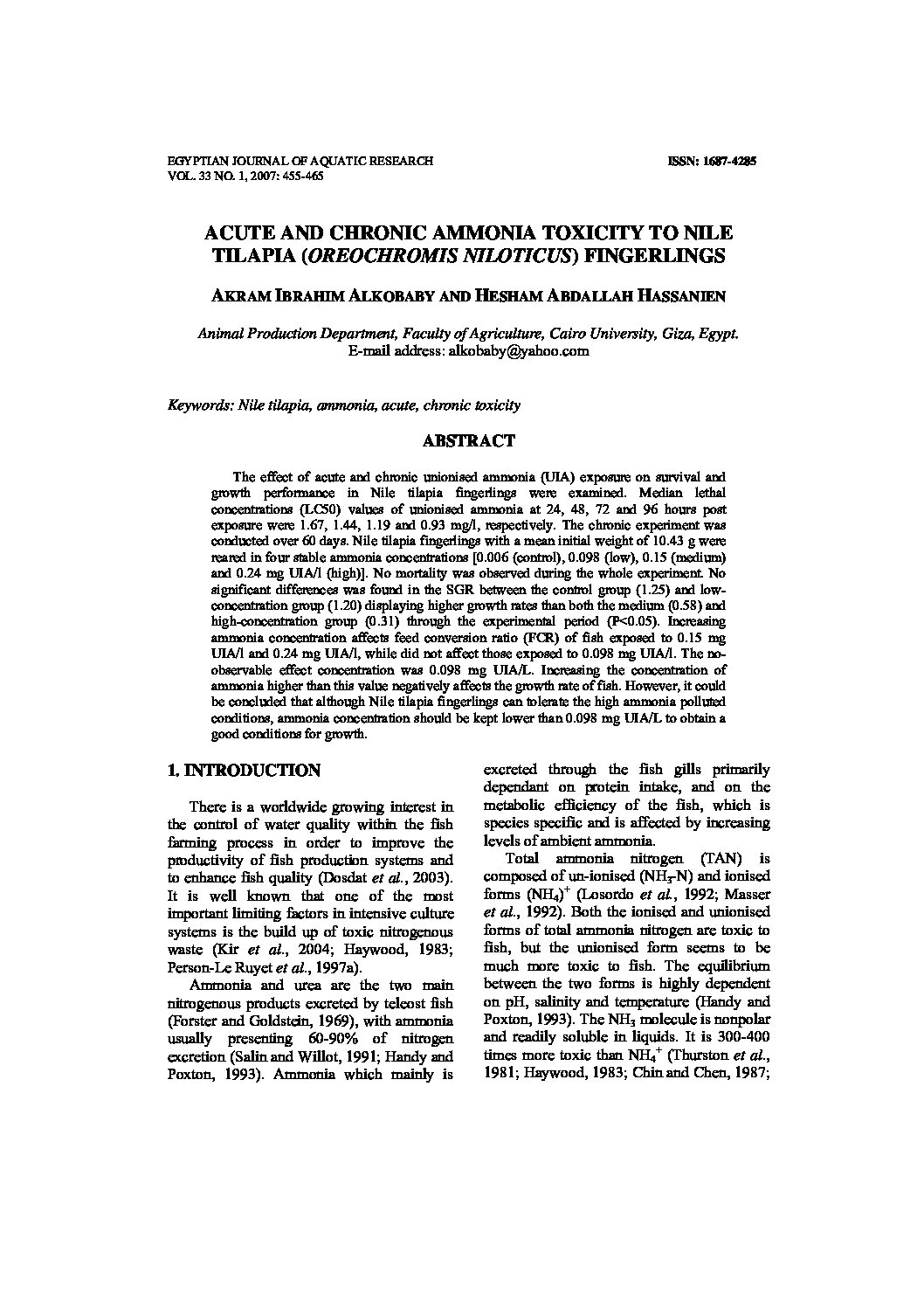Categories
vol-33REVIEW OF THE IMPACT OF HARMFUL ALGAE BLOOMS
AND TOXINS ON THE WORLD ECONOMY AND HUMAN
HEALTH
AHMED MOHAMED M. IBRAHIM
National Institute of Oceanography and Fisheries-Alexandria
Keywords: Harmful algal blooms (HABs), (PSP), (DSP), (ASP), (NSP), Blooming.
ABSTRACT
The most common type of harmful algal blooms (HABs) is referred to as a “Red Tide”
because the bloom discolors the water, making it appear red. However, HABs may also be
yellow, orange, brown, green, white, or pink, depending on which one of the three primary
types of phytoplankton are responsible for the problem; dinoflagellate, diatoms, or bluegreen algae. Of the more than 4,400 marine phytoplankton species, only 50 to 60 are
believed to be toxic. Many HABs (harmful algal blooms), produce vividly colored blooms
of cells that accumulate on surface water. These high biomass blooms can cause hypoxia,
can contribute to toxicity of fish and shellfish, and can cause other environmental problems.
They occur in waters all over the globe, and have been called red tides, brown tides or
yellow tides. Because these descriptors tend to vary, it’s more accurate to call these natural
phenomena harmful algal blooms (HABs). Red tides, whether they are harmful or not, have
been found throughout the world. Scientific studies indicate a global increase in occurrence
and geographic extent of harmful red tides. The aim of the review is to increase the
awareness of the scientific community as well as the general public of the aspects and
effects of such a phenomenon, seeking the search for novel techniques and tools for
limiting its influences on various water bodies. The harmful effect of the Red Tide
phenomenon on the health of man, methods for its detection and means to overcome it will
be intensely discussed. The most common of the toxic syndromes are Paralytic Shellfish
Poisoning (PSP) and Diaffhetic Shellfish Poisoning (DSP). More recently, or since late
1987, Amnesic Shellfish Poisoning (ASP) has become a problem in eastern Canada.







